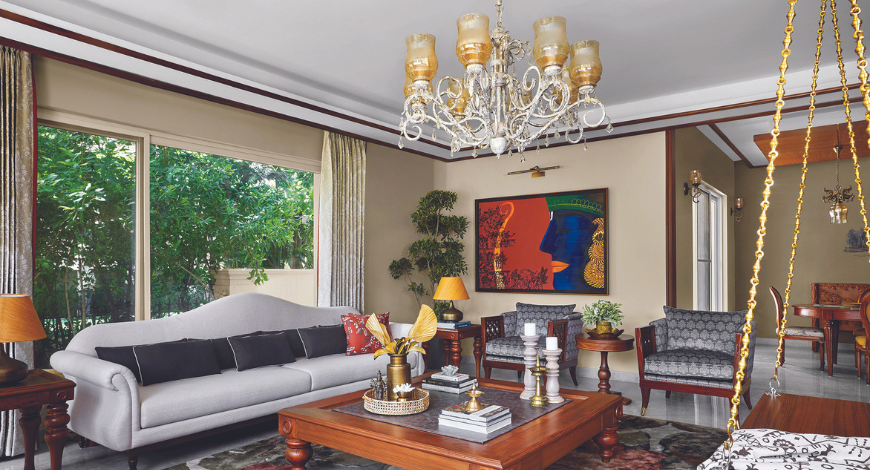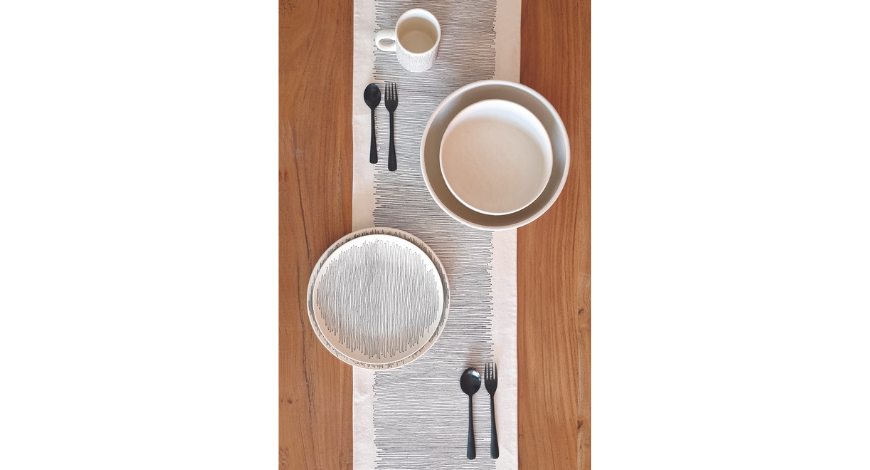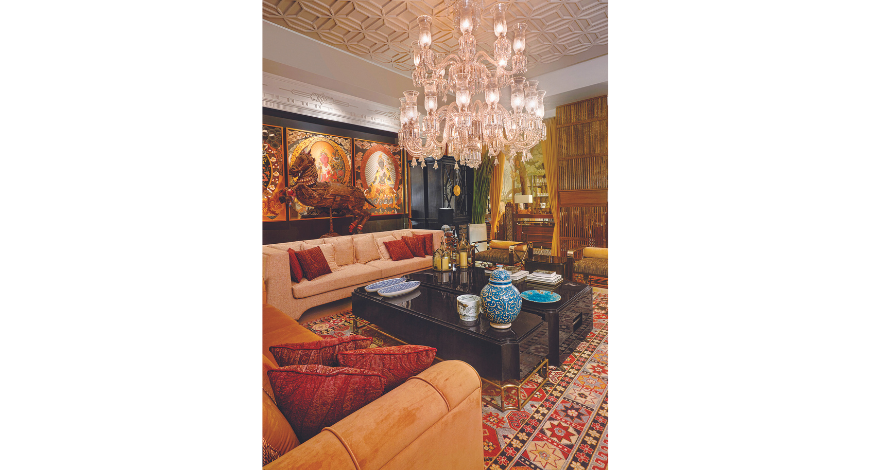- Economy
- Education And Career
- Companies & Markets
- Gadgets & Technology
- After Hours
- Healthcare
- Banking & Finance
- Entrepreneurship
- Energy & Infra
- Case Study
- Video
- More
- Sustainability
- Web Exclusive
- Opinion
- Luxury
- Legal
- Property Review
- Cloud
- Blockchain
- Workplace
- Collaboration
- Developer
- Digital India
- Infrastructure
- Work Life Balance
- Test category by sumit
- Sports
- National
- World
- Entertainment
- Lifestyle
- Science
- Health
- Tech
Design: Beautiful On The Inside
The Indian home décor segment is expected to grow at a CAGR of 6.75 percent from this year to 2027. Top architects and fashion designers have moved into this space, and are defining the tastes of the consumer
Photo Credit : Photograph courtesy: Envisage

A few years back, doing up your home was a massive project almost like a treasure hunt. One would make multiple trips to Panchkuian road, Amar colony market, the State Emporia at Baba Kharak Singh road or the Central Cottage Industries Emporium on Janpath, depending on the budget. It took months to decide on the right look, each piece was properly researched, where possible a fair amount of haggling for the right price was done and then finally, it would be brought home.
Today, all you need to do is to click on a few online links and you can have your choice of furniture, rugs, décor items and accessories delivered to you home. We are seeing top architects and fashion designers moving into the space and defining tastes in this segment. Given their superior aesthetic and design sensibilities, we have seen the popularity of their home décor lines grow. People usually work with them to design the entire look of the space, or they pick up a few pieces from them and build around it.
 Abraham & ThakoreAccording to market research, the Indian home décor segment is expected to grow at a CAGR of 6.75 percent from this year to 2027. In 2023, the revenue in the segment amounted to US$1.75 bn. If we look at global revenues, 2023 saw US$ 128.70 bn, with the United States clocking the maximum revenue of US$ 33,390.0 m. With the home décor segment growing, let’s take a look at some of the trends in the space.
Abraham & ThakoreAccording to market research, the Indian home décor segment is expected to grow at a CAGR of 6.75 percent from this year to 2027. In 2023, the revenue in the segment amounted to US$1.75 bn. If we look at global revenues, 2023 saw US$ 128.70 bn, with the United States clocking the maximum revenue of US$ 33,390.0 m. With the home décor segment growing, let’s take a look at some of the trends in the space.
Home is where the heart is
We are going to see much more individualism in the expression of home decor as many young homemakers in urban India are beginning to define their homes as an expression of their personal styles, after having grown up in family homes where interior choices were dictated by members of the family. This will express itself in a multitude of decorating styles ranging from modern minimalism to more eclectic ornate styles, say designers Abraham & Thakore.
The designers launched the very first collection in London at The Conran Shop with a collection of kimonos and ikat scarves. This collection expanded into textile products for the home such as bed covers, cushions and table linen. “Our fashion collections were developed simultaneously. So, we’ve really been designing collections for both fashion and home since the inception of the brand”, they added.
Designer JJ Valaya believes in the power of contradiction and the element of surprise when designing spaces. “I find it utterly boring when people copy paste while designing a house. Everything seems the same when you go from room to room, it is predictable. There is definitely a language that binds the spaces in the home, but each space has its own personality when surprise and contradiction are a part of the mix. There’s beauty in contradiction. For instance, a concrete wall can be put next to an Italian marble floor. I believe, when all the elements are put together in an interesting way and detailed appropriately, we can have magical results.” Photograph courtesy: J.J. Valaya
Photograph courtesy: J.J. Valaya
Post-pandemic, the global trend has shifted to a focus on personal connection and individual values. People now prioritize expressing their personal beliefs, cultural affinity, and ideologies they believe in through their homes and the spaces they occupy, says Meena Murthy Kakkar of Envisage, an interior and architecture firm.
Going back to nature
Consumers want their spaces to be a reflection of their personalities, their beliefs, and culture. They are leaning towards doing so with the use of sustainable materials. Designers Abraham & Thakore are known to use natural biodegradable materials and employ handcraft skills in the making of their products. “We have been committed to sustainable practices long before sustainability became an industry buzzword. For us, there is no industry if it is not sustainable. This pushes us to think of how we can be sustainable not just in terms of the fabrics and materials, but all forms of production and consumption” they say.
Designer Tarun Tahiliani uses local ingredients and traditional finishes for the spaces he creates. In addition to using material sourced locally and craft, his work has a strong focus on integrating nature with his designs. “We can expect more eco-friendly and sustainable materials, along with bold, statement pieces with a focus on maximalism in the next few years. Home decor colours will continue to feature warm, earthy tones, while also providing pops of vibrant jewel tones. With our ever-changing lifestyles, we will likely see more emphasis on creating flexible and multi-functional spaces, says the designer.
People are becoming more conscious and deliberate in their choices, says Kakkar. Two prominent trends that are here to stay are Biophilia and Japandi. Both of these trends prioritise the incorporation of natural elements into design and encourage a closer connection to the natural world. For instance, the fabrics used in home decor feature handwoven textures, highlighting the preference for materials like cotton, jute, and other natural fibres. Clay, too, has made a remarkable comeback, reflecting the resurgence of handmade and sustainable products. In the coming years, there will be a continued focus on items that are handmade, sustainable, and aligned with nature she believes.
“We are committed to promoting social sustainability by establishing a strong connection with local craftsmen from various regions in India, such as Saharanpur, Srikalahasti, Karaikudi, Athangudi, and Muradabad. During a trip to the Kanjeevaram Sari Weaver’s Village in Tamil Nadu with our students from the School of Planning and Architecture, we came across an empty, abandoned village. Its residents, who were primarily skilled weavers had migrated to cities to work as construction labourers. This experience was a turning point for our firm, prompting us to prioritise bringing work back to villages and empowering these craftsmen. We strive to ensure that these crafts do not fade away, and the cultural fabric of our nation is preserved,”adds Kakkar.
